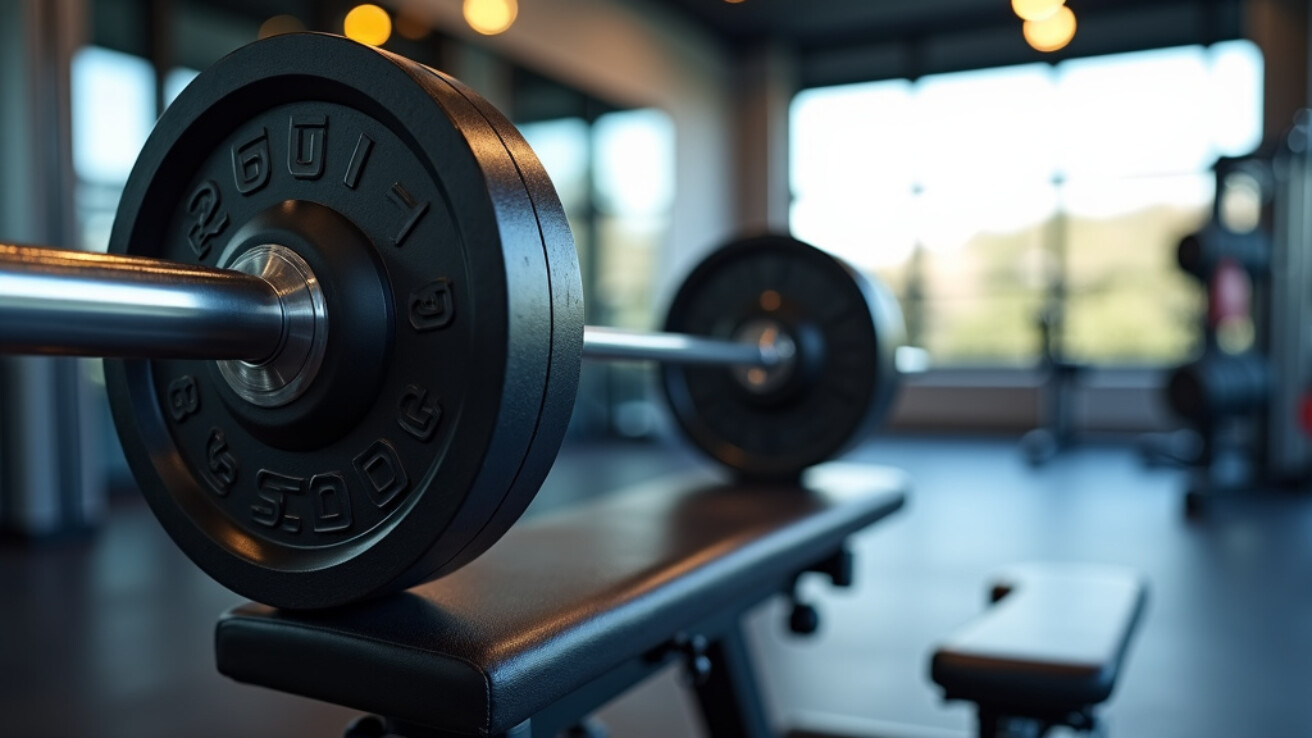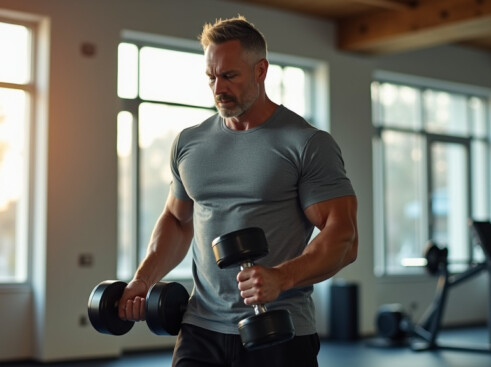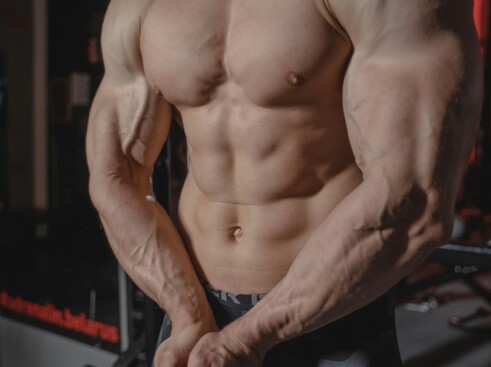Dreaming of broader shoulders, a stronger chest, and more powerful arms? The right upper body exercises can transform your physique and enhance your daily performance. As someone who has spent years in the gym both training and coaching, I’ve seen firsthand how a well-designed upper body routine builds confidence and capability.
From the classic bench press to the mighty pull-up, these movements forge functional strength that translates far beyond the gym. Whether you’re lifting groceries, playing with your kids, or competing in sports, a strong upper body serves as your foundation for better performance and injury prevention.
Many people make the mistake of focusing solely on show muscles like biceps and chest. However, true upper body development requires a balanced approach targeting all major muscle groups. The exercises we’ll explore work multiple muscles simultaneously, maximizing your results while minimizing time spent in the gym.
Let’s explore how to build the strong, sculpted upper body you’ve always wanted through exercises proven by science and experience to deliver results. From beginners to advanced lifters, these movements form the cornerstone of any successful strength training program.
Pull-Ups: Mastering Your Body Weight for Back Development
Pull-ups stand as one of the most challenging yet rewarding bodyweight exercises, engaging multiple muscle groups simultaneously to build impressive upper body strength. The primary muscles worked include the latissimus dorsi, trapezius, rhomboids, and posterior deltoids, making it a powerful compound movement for back development.
The most crucial muscle group in pull-ups is your latissimus dorsi (lats), which serves as your body’s most powerful pulling muscle. These broad, fan-shaped muscles running along your sides are responsible for the primary pulling motion that lifts your body toward the bar.
Beyond the major back muscles, pull-ups significantly engage your biceps, forearms, and core muscles. Your biceps assist in the pulling motion, while maintaining proper form requires substantial core engagement to prevent unwanted body swing.
Building a Foundation for Pull-Ups
For beginners, mastering pull-ups starts with developing foundational strength through targeted exercises. Dead hangs are the first progression step, allowing you to build grip strength and shoulder stability while acclimating to supporting your body weight.
Incorporating assisted variations helps build the necessary strength patterns. Resistance bands provide adjustable support, enabling you to practice the full range of motion while gradually reducing assistance as you grow stronger.
Negative pull-ups offer an effective intermediate step, focusing on the lowering (eccentric) phase of the movement. This technique involves jumping to the top position and slowly lowering yourself down, taking 3-5 seconds per repetition.
Regular practice with inverted rows helps develop the pulling muscles needed for full pull-ups. This exercise mimics the pull-up motion at a more manageable angle, allowing you to build strength progressively.
Active hangs are another crucial progression step, where you hang from the bar while engaging your shoulder blades downward and together. This activation pattern is essential for proper pull-up execution.
Perfecting Pull-Up Technique
Proper form starts with grip positioning – place your hands slightly wider than shoulder-width apart. This width optimizes muscle engagement while protecting your shoulders and wrists from unnecessary strain.
Core engagement plays a vital role in maintaining stability throughout the movement. Keep your legs straight, engage your quadriceps and glutes, and maintain tension in your abdominal muscles to prevent swinging.
Focus on initiating the movement by depressing your shoulder blades down and back. This activation pattern ensures proper muscle engagement and protects your shoulder joints during the exercise.
As you pull yourself up, imagine driving your chest toward the bar rather than simply lifting your chin over it. This mental cue helps maintain proper form and maximizes back muscle engagement.
Consistency is key in mastering pull-ups, so incorporate them into your regular workout routine. Even if you can only perform partial reps or need assistance, regular practice leads to steady improvement over time.
Overhead Press: Building Powerful Shoulders
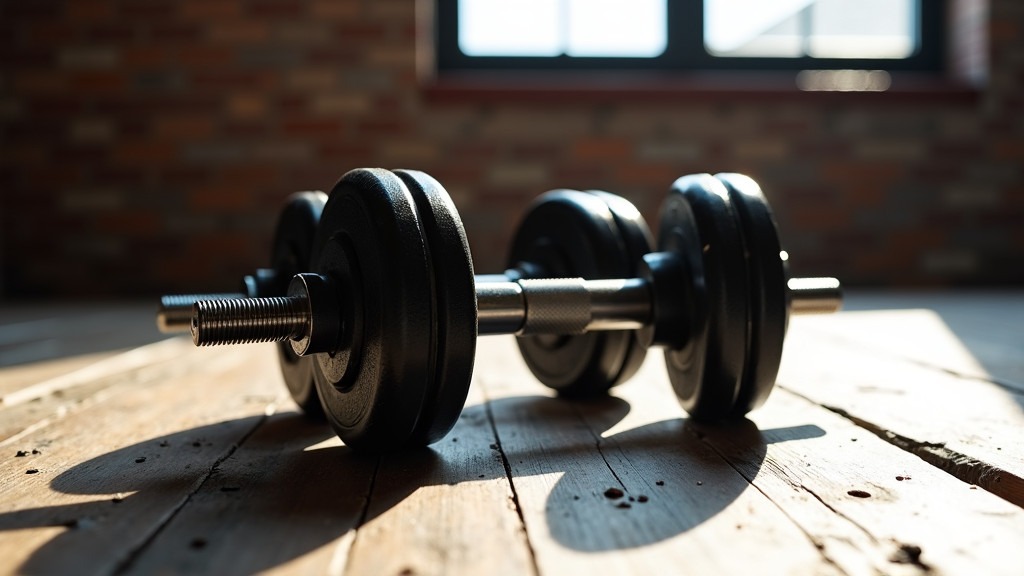
The overhead press ranks among the most effective exercises for developing shoulder strength and stability. This compound movement primarily targets the deltoids and triceps, transforming upper body development when executed properly.
Proper form begins with positioning the barbell at shoulder height, using a grip slightly wider than shoulder width. Keep your core tight throughout the movement, with feet planted firmly at hip-width apart for optimal stability.
When performing the press, brace your core and slightly tuck your chin to allow safe bar passage. Maintain a close bar path to your face as you press upward, finishing with the weight directly above your shoulders.
Mastering Proper Technique
For beginners, starting with a lighter weight is essential to develop proper form. Maintain a neutral spine and avoid excessive back arch to prevent potential injury.
One study found that the average male can overhead press 57 kg (126 lb) for a one-rep max, while the average female can press 30 kg (66 lb). Consider these numbers as guidelines rather than strict targets.
Position your elbows slightly in front of the bar when starting the movement, keeping forearms vertical throughout the press. This alignment optimizes leverage and power generation.
Common Variations for Different Levels
For those new to the exercise, the seated dumbbell press offers greater stability and control. This variation enables focused shoulder engagement without compromising full-body balance.
Intermediate lifters can benefit from incorporating the push press, which uses leg drive to handle heavier weights. This variation develops explosive power while maintaining shoulder engagement.
Advanced lifters may explore single-arm variations or the behind-the-neck press, though the latter demands excellent shoulder mobility and careful progression.
Programming for Progress
For optimal shoulder development, perform the overhead press 2-3 times per week. Start with 3 sets of 8-12 repetitions for muscle growth, or 5 sets of 3-5 reps for strength development.
Recovery between sessions is essential, as shoulders are relatively small muscles prone to overtraining. Monitor your body’s response and adjust volume accordingly.
Rows: Strengthening Your Back and Improving Posture
Rowing exercises are essential in today’s sedentary lifestyle, effectively counteracting the forward-hunching posture developed from extended desk work. These targeted movements strengthen your back and promote better alignment.
The fundamental rowing motion strengthens critical muscle groups in your back, including the latissimus dorsi, rhomboids, and rear deltoids. Together, these muscles support proper spinal alignment and guide your shoulders into optimal position.
Research shows that regular rowing exercises significantly improve posture by strengthening the muscles that counterbalance daily pushing motions, such as typing or driving.
Essential Row Variations for Back Development
The barbell row serves as a cornerstone exercise for back development, targeting multiple muscle groups simultaneously. This compound movement engages your entire posterior chain, from your lower back to your upper traps.
Dumbbell rows enable independent training of each side, helping identify and correct strength imbalances while enhancing core stability and coordination.
Cable rows maintain constant tension throughout the movement, optimizing muscle activation and endurance. Their smooth resistance promotes proper form while minimizing joint stress.
Posture-Specific Benefits
Fitness experts emphasize that rowing exercises effectively address postural issues caused by prolonged sitting. The pulling motion strengthens muscles essential for proper spinal alignment.
When performed correctly, rows help retract your shoulder blades, counteracting the forward shoulder roll common among computer users. This correction maintains healthy shoulder function and prevents upper back pain.
Regular rowing practice leads to noticeable improvements in standing and seated posture within weeks, provided you maintain consistent practice and proper form, especially when squeezing your shoulder blades together at the peak of each movement.
Incorporating Rows Into Your Routine
For optimal results, include 2-3 different rowing variations in your weekly workout routine. This approach ensures comprehensive back development while preventing overuse of any single movement pattern.
Start with lighter weights to master proper form before progressing to heavier loads. Focus on controlled, deliberate movements rather than using momentum.
Maintain a neutral spine throughout each rowing movement, engaging your core to protect your lower back. Proper form maximizes postural benefits while minimizing injury risk.
| Row Variation | Primary Target Muscles | Secondary Muscles |
|---|---|---|
| Bent Over Row | Latissimus Dorsi, Rhomboids, Trapezius | Erector Spinae, Biceps, Forearms |
| Barbell Row | Upper Trapezius, Latissimus Dorsi | Biceps, Teres Major, Posterior Deltoid |
| Chest-Supported Row | Latissimus Dorsi, Trapezius, Rhomboids | Biceps, Posterior Deltoids |
| Meadows Row | Trapezius, Lats, Rear Delts | Core, Biceps |
| Prone Dumbbell Row | Lower Lats | Forearms, Trapezius |
Dips: Sculpting Your Chest and Triceps
Dips stand out as one of the most effective bodyweight exercises for developing upper body strength and muscle mass. When performed correctly, this compound movement engages multiple muscle groups simultaneously, with studies showing the triceps experiencing nearly twice the activation compared to chest muscles.
Dips offer remarkable versatility, allowing modifications to emphasize either chest or tricep development. The key lies in body positioning – maintaining an upright torso targets the triceps more directly, while leaning forward shifts emphasis to the chest muscles.
As with any challenging exercise, proper form is crucial for both safety and results. Here’s how to master the essential technique and variations for your fitness level.
Mastering Proper Form
The foundation of an effective dip starts with hand placement. Position your hands so the bar rests in the crook between your thumb and pointer finger rather than in your palm. This alignment creates a stable base and protects your wrists from strain.
Keep your forearms vertical throughout the movement, avoiding the common mistake of letting your elbows drift backward. This maintains proper tricep engagement and reduces shoulder strain.
For optimal range of motion, lower yourself until your triceps are slightly below parallel with the ground. While some advocate for deeper dips, this conservative depth offers the best balance of muscle activation and joint health.
Beginner-Friendly Variations
If you’re new to dips or building strength, start with bench dips using a single bench or chair. Place your hands behind you on the bench edge with feet on the floor, then lower and raise your body with control.
Resistance band-assisted dips offer another excellent progression tool. According to Set For Set, bands provide variable assistance that matches your strength curve – offering more help at the bottom where you’re weakest.
Jumping dips serve as an ideal bridge between assisted and full bodyweight versions. Use a controlled jump to help initiate the upward phase while focusing on a slow, controlled descent.
Advanced Techniques
Once you’ve mastered basic dips, weighted variations can accelerate strength and muscle gains. Using a dip belt, aim for 4-6 reps with added weight for optimal strength development.
Ring dips introduce instability that dramatically increases muscle activation throughout your upper body. The free-moving rings require significantly more stabilization from your core and shoulder muscles.
For chest emphasis, try the Gironda dip variation, named after legendary bodybuilder Vince Gironda. This technique involves leaning forward with moderate hip flexion and slightly flared elbows to maximize pectoral engagement.
Incorporate dips into your routine twice weekly for optimal results, alternating between heavier and lighter sessions. This frequency allows adequate recovery while maintaining consistent progression in both strength and muscle development.
Bicep Curls: Defining Your Arms
Bicep curls remain the gold standard for targeting and defining your biceps brachii muscles. While compound movements like pull-ups and rows engage your biceps indirectly, isolated curl variations allow you to focus specifically on building peak definition and strength.
Before advancing to complex techniques, mastering proper form is crucial for maximizing results and preventing injury. Keep your core engaged, elbows fixed at your sides, and avoid swinging or using momentum to lift the weight.
Essential Curl Variations for Complete Arm Development
The classic dumbbell curl serves as a foundational movement, allowing you to work each arm independently while maintaining strict form. Focus on controlling both the lifting and lowering phases to maximize muscle engagement.
Barbell curls enable you to lift heavier weights, making them excellent for building overall bicep mass and strength. The fixed grip position ensures both arms work equally through the full range of motion.
For developing arm thickness and forearm strength, hammer curls are particularly effective. Using a neutral grip with palms facing each other targets the often-neglected brachialis muscle beneath the biceps.
Preacher curls, performed on an angled bench, isolate the biceps while preventing momentum-based cheating. This variation effectively develops the lower portion of the biceps and enhances peak definition.
Advanced Techniques for Enhanced Definition
Concentration curls enable intense focus on peak contraction, making them ideal for sculpting definition. Research indicates this exercise achieves some of the highest levels of biceps activation among all curl variations.
Spider curls, performed face-down on an incline bench, create unique tension through the full range of motion. This variation challenges the biceps at their most contracted position.
The Zottman curl combines standard and reverse curls into one fluid movement, targeting both the biceps and forearms simultaneously. This approach develops balanced, well-defined arms.
Common Mistakes to Avoid
According to physical therapist Sam Becourtney, using momentum to complete bicep curls ranks among the most common errors. Watch for signs like body swinging, lower back arching, or leg dipping during the movement.
Another crucial mistake is ignoring the eccentric (lowering) phase of the curl. Research shows that controlled lowering generates more force than the lifting phase, making it essential for muscle development.
Maintaining proper wrist position throughout the movement prevents unnecessary strain and ensures optimal bicep engagement. Avoid letting the weights control your wrist position, especially during the lowering phase.
Push-Ups: The Ultimate Upper Body Bodyweight Exercise
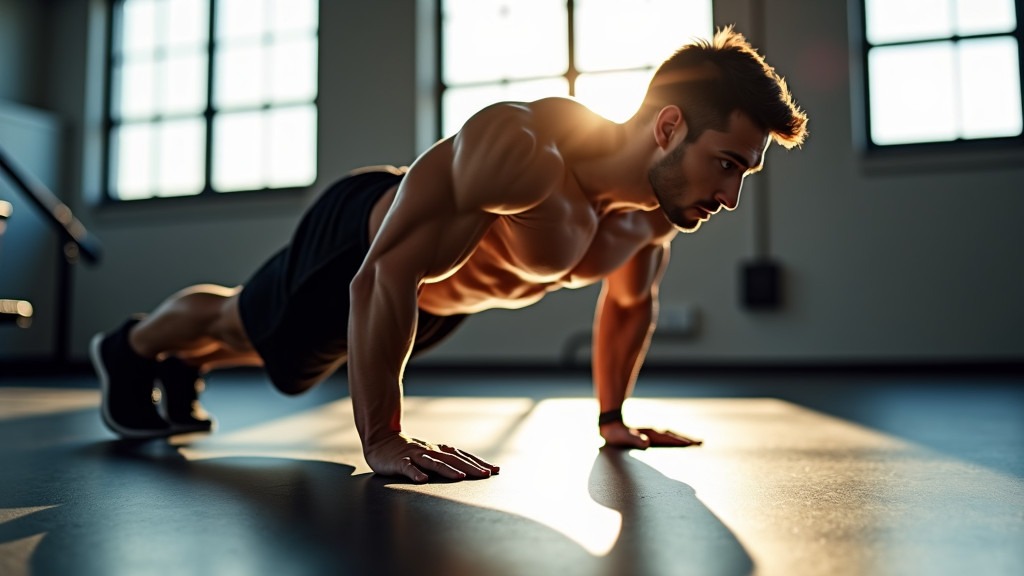
Push-ups are one of the most effective compound exercises available, engaging virtually every muscle in your upper body whileactivating your core and stabilizing muscles.
This fundamental bodyweight movement targets multiple muscle groups – including your chest, triceps, shoulders, and core muscles – in one fluid motion.
When performed correctly, push-ups build strength and can help increase testosterone levels naturally, supporting muscle growth and bone health.
Perfect Your Push-Up Form
Start in a high plank position with hands slightly wider than shoulder-width apart, fingers spread to engage your upper body muscles fully.
Maintain a straight line from head to ankles, engaging your core to prevent hip sagging or elevation during the movement.
Lower your body as one unit until your chest nearly touches the ground, keeping your elbows at a 45-degree angle rather than flaring them outward.
Common Mistakes to Avoid
A frequent error is allowing the hips to sag during the movement, which strains your lower back and reduces the exercise’s effectiveness.
Another common mistake is positioning your hands too far forward or wide, creating unnecessary shoulder stress and limiting chest engagement.
Avoid partial repetitions – ensure you lower your body completely while maintaining proper form throughout the entire range of motion.
Variations for All Fitness Levels
For beginners, start with incline push-ups by placing your hands on an elevated surface like a bench or sturdy chair, making the movement more manageable while building strength.
Intermediate exercisers can challenge themselves with diamond push-ups, which emphasize triceps development while engaging the chest muscles.
Advanced athletes might explore plyometric variations like clap push-ups or decline push-ups with feet elevated to increase intensity and develop explosive power.
Remember to prioritize quality over quantity, ensuring each repetition maintains proper form for maximum benefit and reduced injury risk.
| Push-Up Variation | Targeted Muscle Groups |
|---|---|
| Standard Push-Up | Chest, Triceps, Shoulders |
| Wide-Grip Push-Up | Chest |
| Narrow-Grip Push-Up | Triceps |
| T-Push-Up | Full-Body |
| Single-Leg Push-Up | Upper Body, Core |
| Feet-Elevated Push-Up | Upper Body, Core |
| Single-Arm Medicine Ball Push-Up | Arms, Pecs, Shoulders |
| Push-Up With Arm Reach | Arms |
| Atomic Push-Up | Chest, Core |
| One-Arm Push-Up | Arms, Chest |
| Clap Push-Up | Chest |
| 5 Push-Up | Chest |
| Spiderman Push-Up | Core |
| Eccentric Push-Up | General Upper Body |
| Pike Push-Up | Shoulders |
| Band Push-Up | Chest, Arms |
Face Pulls: The Key to Balanced Shoulders and Better Posture
Face pulls have emerged as an essential exercise for shoulder health and posture improvement. This targeted movement specifically strengthens the rear deltoids, trapezius, and rotator cuff muscles – crucial areas that often weaken during prolonged desk work.
I’ve discovered that face pulls are among the most effective exercises for addressing postural issues and preventing shoulder injuries. Robert Herbst, a 19-time World Champion powerlifter, explains that face pulls help keep the shoulders squared and back so someone doesn’t get the pulled-forward look from doing too much chest and front delt work.
Key Benefits of Face Pulls
The primary advantage of face pulls lies in their ability to strengthen the posterior deltoids and upper back muscles. These muscles play a vital role in maintaining proper posture and preventing the forward shoulder roll common among office workers.
Face pulls excel at enhancing shoulder stability and mobility. By targeting the rotator cuff muscles, they help create a more balanced shoulder joint, reducing the risk of injury during other upper body exercises.
Regular practice of face pulls leads to improved scapular health and better overall shoulder function, enhancing performance in daily activities and other workout movements.
Proper Form and Technique
To perform face pulls correctly, start by setting up a cable machine with a rope attachment positioned slightly above your head. This higher position ensures optimal engagement of the target muscles.
When executing the movement, focus on pulling the rope toward your face while keeping your elbows high and in line with your shoulders. Your hands should travel past your ears as you engage each muscle group.
A common mistake I see is using too much weight, which compromises form and reduces the exercise’s effectiveness. Start with lighter weights and prioritize proper technique over heavy lifting.
Common Mistakes to Avoid
One of the biggest errors people make is pulling the attachment toward their chin or neck instead of their face. This shifts the focus away from the rear deltoids and reduces the exercise’s effectiveness.
Another frequent mistake is allowing the elbows to drop during the movement. Keep them elevated throughout the exercise to maintain proper muscle engagement and maximize benefits.
Using momentum to complete the movement is also problematic. Control is essential – if you can’t perform the exercise slowly and deliberately, you’re likely using too much weight.
Incorporating Face Pulls Into Your Routine
For optimal results, aim to perform face pulls 2-3 times per week as part of your upper body training. Start with 2-3 sets of 12-15 repetitions, focusing on quality movement patterns.
Consider including face pulls at the beginning of your workout as part of your warm-up routine. This helps activate the stabilizer muscles before moving on to heavier pressing movements.
For those new to the exercise, practicing with lighter weights and higher repetitions can help develop proper form and muscle memory. As your technique improves, gradually increase the weight while maintaining strict form.
Plank Variations: Strengthening Your Core for Upper Body Stability
A solid core foundation is essential for upper body strength, but achieving it requires more than just standard planks. From walking planks to side planks with rotations, these variations target different aspects of core stability to enhance your overall performance.
The basic plank engages multiple muscle groups, including your shoulders, back, and core. When performed correctly, it creates a strong connection between your upper and lower body, essential for compound movements and daily activities.
Traditional planks strengthen your deltoids, glutes, quads, hamstrings, and calves. By incorporating strategic variations, you can amplify these benefits while building functional strength that transfers to real-world movements.
Essential Plank Variations for Core Strength
The forearm plank serves as your baseline movement, with elbows positioned directly under your shoulders. This variation effectively targets your deep core muscles while maintaining a neutral spine position.
Walking planks elevate core engagement significantly. As noted in research by health experts, this movement strengthens both upper and lower body muscle groups while challenging your stability.
Side planks specifically target your obliques and hip abductors, essential muscles for rotational strength and lateral stability. Adding leg lifts or rotations to your side plank further challenges these muscle groups.
Form and Progression Tips
Proper form starts with maintaining a straight line from your head to your heels. Keep your core engaged by drawing your navel toward your spine, and avoid letting your hips sag or pike upward.
For beginners, start with modified versions like knee planks or elevated planks. Focus on holding these positions for 20-30 seconds before progressing to more challenging variations.
As your strength improves, incorporate dynamic movements like shoulder taps or plank to push-up transitions. These variations enhance shoulder stability while maintaining core engagement.
Advanced Plank Variations
The RKC plank represents a more intense variation that maximizes core activation. This version requires full-body tension and challenges even experienced fitness enthusiasts to maintain proper form beyond 10 seconds.
Suspension trainer planks introduce instability to amplify core engagement. The unstable nature of the straps forces your stabilizing muscles to work harder throughout the movement.
One-arm planks test both your balance and core strength by removing a point of support. This advanced variation requires intense focus on maintaining proper alignment while resisting rotational forces.
Designing Your Upper Body Workout Routine
Creating an effective upper body workout routine requires careful consideration of exercise selection, sequencing, and volume. Success depends on balancing pushing and pulling movements while ensuring adequate recovery between training sessions.
Research demonstrates that training each muscle group 2-3 times per week optimizes muscle growth. An upper/lower split routine proves particularly effective, allowing twice-weekly upper body training with sufficient recovery time.
Exercise Selection and Movement Patterns
A well-designed upper body workout incorporates exercises from six key movement categories: horizontal pushing, horizontal pulling, vertical pushing, vertical pulling, elbow flexion, and elbow extension.
For horizontal pushing, include exercises like the bench press and push-ups. These movements target the chest muscles while engaging the shoulders and triceps as secondary muscle groups.
Balance pushing movements with horizontal pulls such as barbell rows and seated cable rows. These exercises promote shoulder health and develop back strength.
Exercise Sequencing and Volume
Begin each workout with compound exercises when energy levels are highest. Research confirms that performing heavy compound movements first maximizes strength gains and muscle development.
For optimal results, perform 3-4 sets of 6-10 repetitions on compound exercises with 2-3 minutes rest between sets. For isolation exercises, complete 2-3 sets of 10-15 repetitions with 60-90 seconds rest.
Sample Beginner Upper Body Workout
Start with push-ups (3 sets of 8-10 reps) to build foundational strength and stability. Follow with seated cable rows (3 sets of 6-8 reps) to train the opposing muscle groups.
Progress to dumbbell shoulder presses (3 sets of 8-12 reps) and lat pulldowns (3 sets of 8-12 reps) to develop balanced shoulder and back strength. Finish with bicep curls and tricep extensions (2 sets each of 12-15 reps).
Recovery and Progressive Overload
Allow 48-72 hours between upper body workouts for proper recovery. This interval enables muscle repair and growth while minimizing the risk of overtraining and injury.
Implement progressive overload by gradually increasing weight, sets, or repetitions. Monitor your workouts to ensure consistent muscle challenge and development.
Conclusion: Elevate Your Upper Body Training for Optimal Results
Transforming your upper body training is about more than aesthetics—it’s about building functional strength that enhances every aspect of your daily life. Through consistent application of proper form and progressive overload principles, you’ll develop the strength and muscle definition you’re working toward.
I’ve witnessed many individuals transform their fitness journey by mastering fundamental movements and implementing smart programming. Success comes from patience and dedication while steadily increasing the demands on your muscles.
Your upper body transformation journey starts today. Stay committed to your training, prioritize proper technique, and give your body the support it needs to reach new heights of strength and performance.



